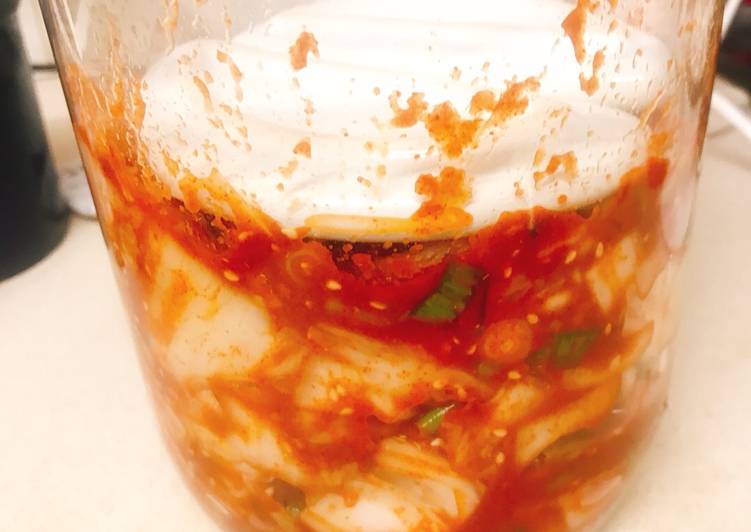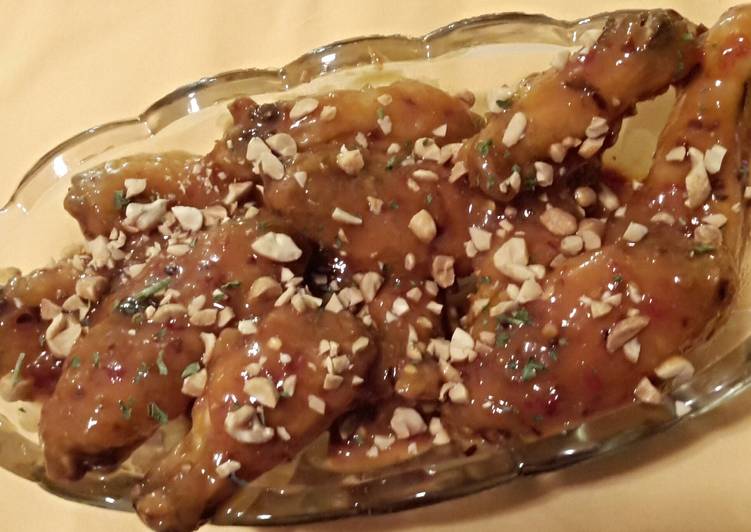How to Prepare Favorite Kimchi

Hey everyone, I hope you are having an amazing day. Today I will show you a way to make a distinctive dish, Kimchi. This is one of my favourite food recipe, this time i’am gonna make it a little bit tasty. This will be really delicious.
Kimchi Recipe. Ponytail Kimchi (Chonggak kimchi: 총각김치). Огуречный кимчи (oisobagi kimchi) и суп из редьки с говядиной. Kimchi is a traditional Korean dish made of seasoned vegetables and salt.
You can have Kimchi using 23 ingredients and 16 steps. Here is how you achieve it.
Ingredients of Kimchi
- It’s 2 of Chinese leaf cabbages (I bought two of them and had about 900g for two.).
- Prepare 90 g of salt (10-12% of cabbage preferably sea salt).
- Take 450 ml of (10-12% of cabbage x 5) water.
- You need of [Sauce].
- Make ready 1/2-1 of apple (about 200-400g).
- Prepare 2-4 cloves of garlic (about 40g).
- Make ready of about 50 g Root ginger, skin peeled.
- Prepare 1 bunch of spring onion.
- You need of (option) 1/3 bunch of Chinese chives (nira), if you can get them. Cut into 3cm. If you do not have it, cut half of spring onion 3cm and the other half small.
- Prepare 50 ml of fish sauce (I could not get Korean 魚醤 in the UK.).
- Take 1-2 TBS of fine chilli powder (if Korean chilli, 3 TBS).
- Make ready 1-2 TBS of coarser chilli powder (if Korean chilli, 3 TBS).
- You need 2 tsp of sugar.
- Take of kelp Kombu, optional.
- Take of niboshi, optional.
- You need of dried shrimp, optional.
- You need of Shiokouji, optional.
- Take of sesame seeds, optional.
- Prepare of honey, optional.
- Make ready of [Optional vegetables].
- You need of Daikon radish.
- You need of cucumber.
- You need of carrots.
Home » Kimchi dishes » Traditional Kimchi (Napa Cabbage Kimchi).Kimchi (김치) is a collective term for vegetable dishes that have been salted, seasoned, and fermented.Kimchi, a staple of Korean households for generations, has gained superstar status in the kitchen, and it's easy to see why.With a complex flavor, variety of uses, and an all-star nutritional scorecard.
Kimchi step by step
- Cut Chinese cabbages into serving sizes. Traditionally, cabbages are not cutting into serving sizes and put sauces between leaves. However, this way is much easier to handle! So cut cabbages..
- Divid them into hard parts and tender leaves..
- Wash them under running water and drain them in a colander..
- In a big bowl or a big pan, sprinkle salt on to harder leaves and pour water. (The amount of salt is 10-12% of cabbage and water is 5 times of salt). Then put a plate and put something as a weight..
- Leave them for about 30 mins and add softer leaves. Then put plate and a weight on the top again. And leave it for another two and half hours or so..
- After about three hours in total, rinse them under running water and drain them. Taste it. If it is too salty, put them in freshwater and get rid of salt a little bit. Make the salt level as Japanese asatzuke: not too salty but salty. Leave them in a sieve for about 3 hours in order to drain excess water. Or if you are in hurry, squeeze by hands and get rid of the excess water without waiting for three hours..
- While waiting for the cabbage to dry, make the sauce. (optional "dashi" stock) If you have kelp and niboshi, boil water. Pour over kelp and niboshi and leave until it becomes room temperature. This “dashi” will gives depths to Kimuchi. You only need small amount (30ml, 2 Tablespoon) for this but you and use rest for other dishes..
- Peel the ginger. Please use tea spoon to peel it. It is the safest and easiest way to peel ginger. Usually, Brtish people do not know about it. Peel the garlic as well..
- Cut spring onion. Half of them as small pieces and the other half about 3cm. If you have Chinese chives (Nira), please use them and cut Nira as 3cm and all spring onion small! It will taste much better with Nira but I cannot find it here. I think that you could get it in Japanese or Chinese supermarkets in London. You could also use normal chive instead as well..
- Put peeled ginger, garlic and apple in a food processor. Make purée..
- Mix two types of chilli powders in a bowl and mix well. Use coarser and finer ones, if you do not have two types, just use one. Try to use a finer chilli and coarser chilli which gives better flavours. But if you cannot find two types of chilli powders, just used one. Mix both chillies well in a bowl. If you have Korean chilli powders, you probably need more than UK ones as they are milder and they are better for Kimchi..
- Add all sauce ingredients, including the purée and "dashi" stock into a big bowl except the chilli powders and mix them well. Please start to add less than half of the chilli powder mix. Then, add chilli powder mix little by little to suit your taste. If you add all at once it may become too hot for you and it would be impossible to be undone. Therefore, please start with a smaller quantity. You could add a small portion of your former Kimchi sauce or Kimchi to accelerate the fermentation..
- The beauty of homemade Kimchi is you can make as you like. You could add more garlic, ginger, apples, more spring onion, or add chives etc. You could add Kelp, niboshi or dried fish, honey, shiokouji 塩麹 etc to give complex taste when you ferment it. So, play with your sauce and try to find your perfect Kimchi! And you can definitely make much tastier Kimchi than bought ones!.
- Then, add cabbage and mix them with hands with gloves. I use disposable plastic gloves. Then after mixing well, put them into a clean container. I use a Kilner fermentation bottle set which is great for Kimuchi..
- Leave it in a relatively cool place in the house for at least three days and it is ready to eat! It will change its taste according to the fermentation..
- I could not get Korean fish saice 魚醤 but I was able to buy this from Ocado..
The most common Korean banchan, Koreans eat kimchi eaten with rice along with other banchan dishes.Preparing kimchi is fairly easy, but it does take a bit of time.Open the jar briefly to let out the.
Korean dish made from fermented vegetable. Поиск kimchi.ru. ТРЕНДЫ. кимчи.See more ideas about Kimchi recipe, Kimchi, Maangchi.How to make Kimchi-bokkeumbap (or kimchi bokkeumbap, kimchi bok eum bap, kimchi bokkeum bap, gimchi bokkeumbap), Kimchi fried.Kimchi is a traditional Korean dish of fermented vegetables, the most common of which are napa cabbage and daikon radish.Kimchi is a fermented blend of cabbage, chili peppers, garlic, scallions, and other spices often eaten with every meal in Korea.





